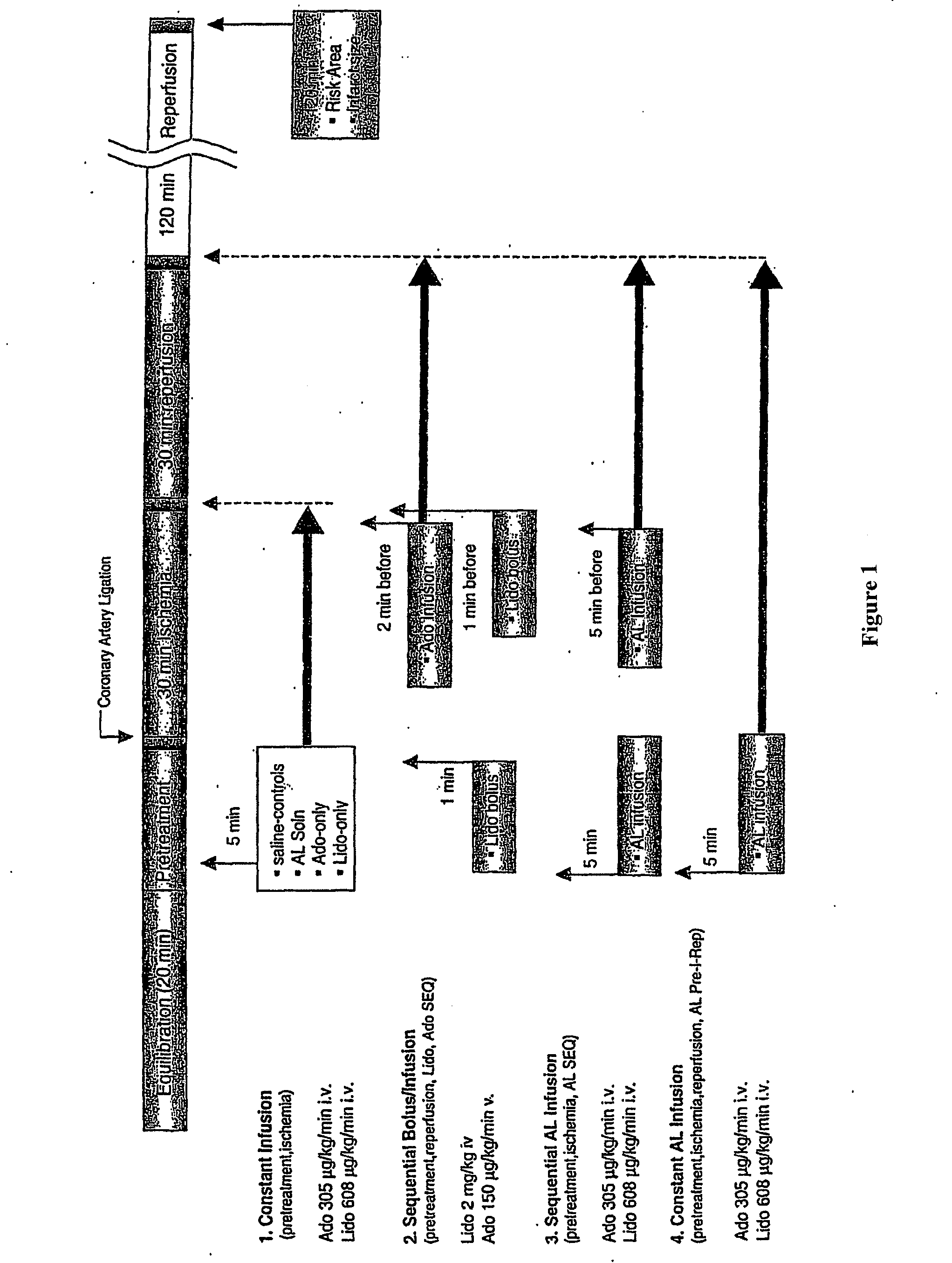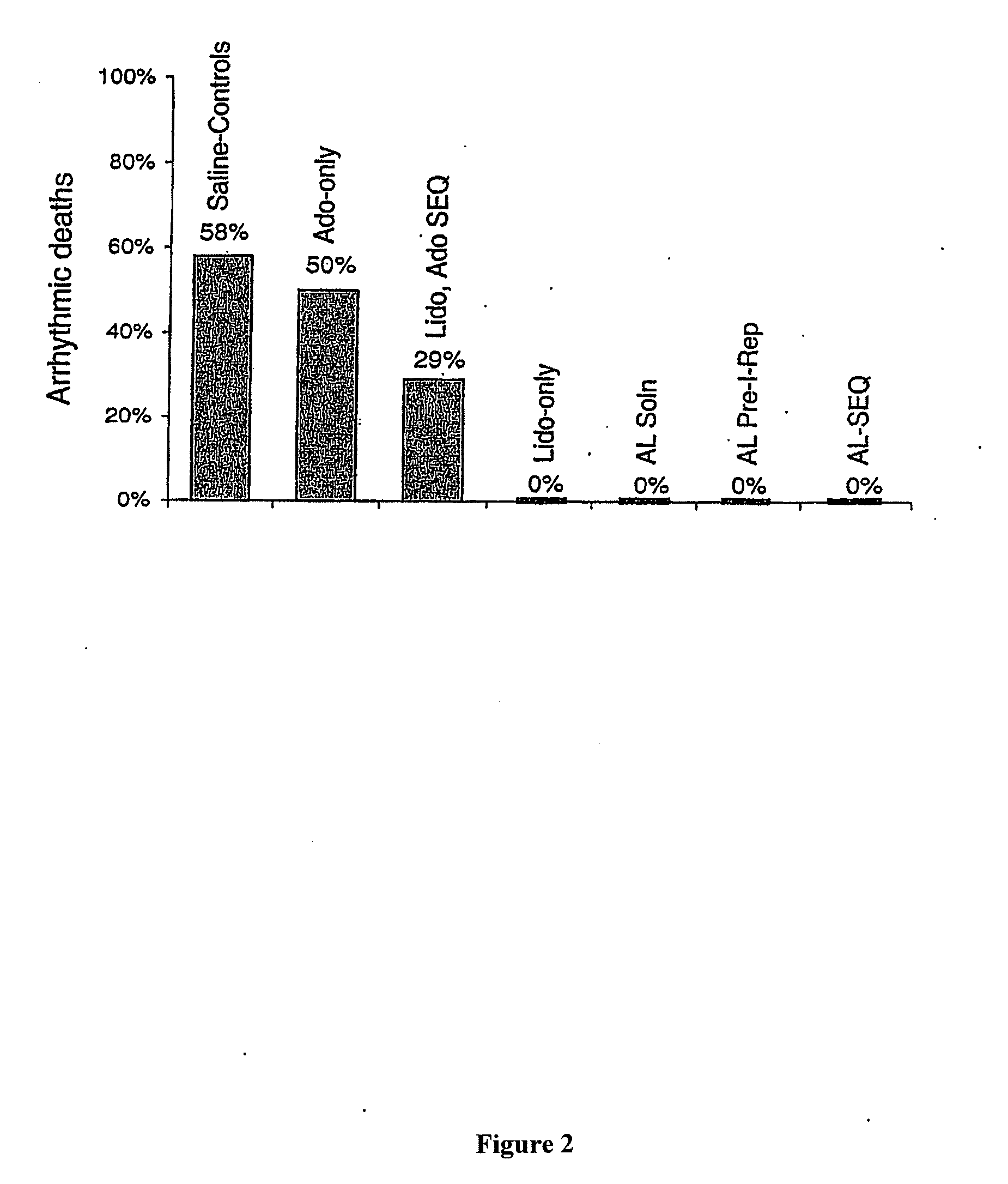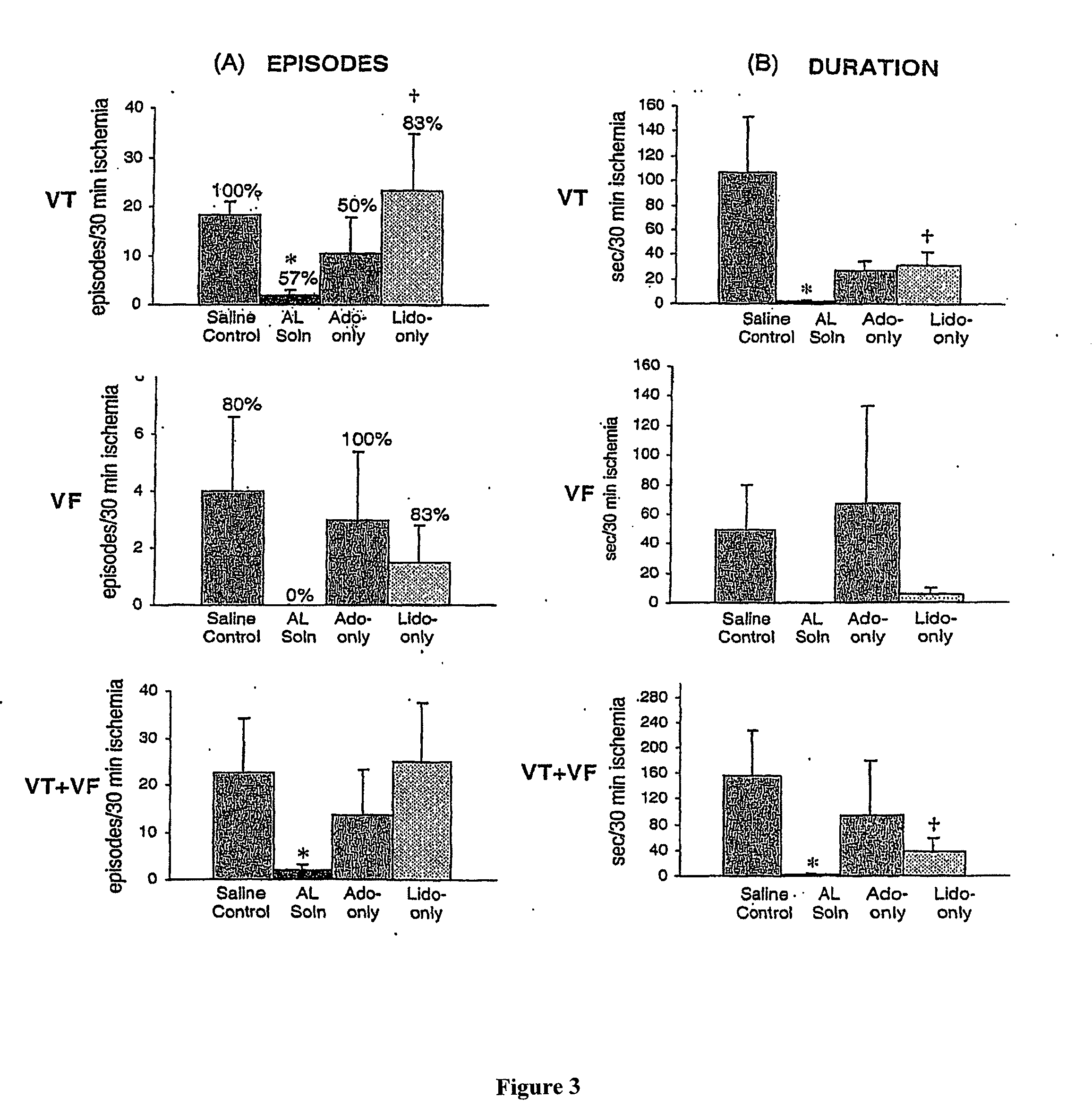Organ preconditioning, arrest, protection, preservation and recovery
a cell, tissue or organ technology, applied in the direction of drug compositions, peptide/protein ingredients, cardiovascular disorders, etc., can solve the problems of ionic and metabolic imbalance, damage to free radical generation and oxidative stress, and significant higher risk of early (first year) and late (3 to 5 years)
- Summary
- Abstract
- Description
- Claims
- Application Information
AI Technical Summary
Benefits of technology
Problems solved by technology
Method used
Image
Examples
example 1
Combinational Therapy of Adenosine and Lignocaine after Regional Ischemia (at Varying Concentrations)
[0218]Animals and Reagents: Male Sprague Dawley rats (330-400 g) from the James Cook University Breeding Colony were fed ad libitum and housed in a 12-hour light / dark cycle. On the day of the experiment rats were anaesthetised with an intraperitoneal injection of Nembutal (Sodium Pentabarbitone; 60 mg / kg) and the anaesthetic was administered as required throughout the protocol. Animals were treated in accordance with the James Cook University Guidelines for use of ‘Animals for Experimental Purposes’ (Ethics approval number A557). Adenosine (A9251 >99% purity), copper II pthalocyanine-tetrasulfonic acid tetrasodium salt (blue dye), and triphenyltetrazolium chloride (TTC) and all chemicals were obtained from Sigma Aldrich (Castle Hill, NSW). Lidocaine hydrochloride was purchased as a 2% solution (ilium) from the local Pharmaceutical Supplies (Lyppard, Queensland).
[0219]Surgical Protoco...
example 2
The Effect of the Pharmacological Preconditioning the Heart: Targeting Adenosine Receptors and Voltage-Sensitive Na+ Fast Channels
[0255]This example investigates the preconditioning effect of combinatorial therapy targeting adenosine receptors and voltage-dependent sodium fast channels in the in situ rat model of regional ischaemia. Adenosine and / or A1 receptor agonist (CCPA) plus lidocaine was co-administered 5 min before and during 30 minutes coronary artery ligation, and the results compared to classical ischaemic preconditioning. Adenosine and lidocaine is used in example 1 as the sole arresting and protecting combination in cardioplegia, and that co-administration of the two drugs at non-arresting concentrations during ischaemia result in better cardioprotection. Cardiac Na+ channels initiate and propagate action potentials in the atria, ventricles and intercalated discs, and their gating is believed to rely exclusively on changes in the resting membrane potential123,124. Durin...
example 3
Effect of Adenosine and Lignocaine with Esmolol on Functional Recovery of the Rat Heart after Arrest
[0264]This example demonstrates the effect of esmolol, an antiadrenergic, together with Adenosine and Lignocaine on functional recovery after a period of arrest using intermittent perfusion.
[0265]Hearts from adult whistler rats (350 g) were prepared using the method described below. Intermittent retrograde perfusion was performed under a constant pressure head of 70 mmHg after hearts were switched back from the working mode to the Lagendorff mode. After stabilisation, the hearts were arrested using either:
[0266](i) Adenosine (200 uM) and Lignocaine (500 uM) plus Esmolol (100 uM);
[0267](ii) Adenosine (200 uM) and Lignocaine (500 uM) plus Esmolol (10 uM);
[0268](iii) Adenosine (20 uM) and Lignocaine (500 uM) plus Esmolol (100 uM).
[0269]Solutions containing these compounds were provided in Krebs Henseleit (10 nM glucose, pH 7.55 @ 37° C.). The aorta was then cross-clamped and the heart le...
PUM
| Property | Measurement | Unit |
|---|---|---|
| temperature | aaaaa | aaaaa |
| temperature | aaaaa | aaaaa |
| temperature | aaaaa | aaaaa |
Abstract
Description
Claims
Application Information
 Login to View More
Login to View More - R&D
- Intellectual Property
- Life Sciences
- Materials
- Tech Scout
- Unparalleled Data Quality
- Higher Quality Content
- 60% Fewer Hallucinations
Browse by: Latest US Patents, China's latest patents, Technical Efficacy Thesaurus, Application Domain, Technology Topic, Popular Technical Reports.
© 2025 PatSnap. All rights reserved.Legal|Privacy policy|Modern Slavery Act Transparency Statement|Sitemap|About US| Contact US: help@patsnap.com



